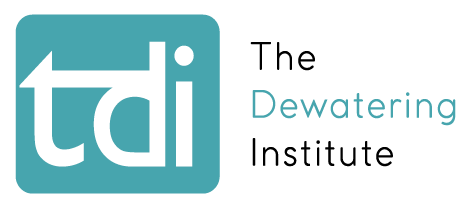In the world of wellpoint dewatering, we regularly face significant challenges. It’s part of our profession. Whether it’s unpredictable groundwater levels or complex environmental regulations, every situation demands a well-considered approach and a wealth of knowledge. But what obstacles do we encounter most often? And more importantly: how do we overcome them? In this article, we’ll explore the five biggest challenges in wellpoint dewatering and explain how we tackle them effectively.
1. Fluctuating groundwater levels
Groundwater levels are influenced by various factors such as rainfall, drought, and human activity, including nearby construction projects. For effective wellpoint dewatering, it’s crucial to accurately monitor the groundwater level. We ensure this level remains stable to prevent both flooding of construction pits and ground subsidence. Too high, and our construction pits are flooded. Too low, and we risk subsidence, with all the ensuing consequences.
How do we approach this?
To avoid surprises, we use a combination of technology and local knowledge, allowing us to accurately predict how the groundwater will behave. This begins with thorough preliminary research: we review historical data, conduct groundwater measurements, and use models to predict how the water level will respond to our pumping. With this information, we adapt our pumping techniques so we always remain in control. We call this adaptive pumping. It means that our equipment and staff are ready to make adjustments based on real-time data. This ensures the ground beneath our projects remains stable.

2. Subsidence during wellpoint dewatering
Subsidence poses a serious risk to any construction project. It not only causes disruption on the construction site but also endangers surrounding infrastructure and buildings. This can result in significant delays, additional repair costs, and, in the worst-case scenario, safety risks for both the construction site and the surrounding area.
How do we approach this?
We manage the groundwater level through precise wellpoint dewatering, which is essential for stabilizing ground settlement and minimizing the risk of subsidence. We begin with a detailed analysis and monitoring of the groundwater level, ensuring our dewatering is precisely tailored to the specific requirements of the project. In doing so, we consider several crucial measures:
- Optimal drainage: We ensure we don’t extract too much water, so as not to disrupt the soil’s natural balance.
- Seasonal drainage: Where possible, we schedule drainage work in the winter, when there is less settlement, to minimize the impact on the soil.
- Return pumping: Through return pumping, we prevent unnecessary lowering of the groundwater level in sensitive areas.
- Vertical Screens: We install vertical screens to monitor and manage groundwater levels around the project area.
Through advanced monitoring techniques and our expertise, we ensure we maintain continuous control of the situation. This not only guarantees the stability and safety of the construction environment but also prevents costly delays and other risks.
3. Incomplete or missing soil information
Sometimes, information about what exactly lies underground at our project sites is lacking. This can include anything from ancient watercourses to different soil layers or even forgotten structures. Without this knowledge, we run the risk of unexpected complications during drainage operations.
How do we approach this?
To avoid surprises underground, we conduct thorough preliminary investigations, including additional tests and analyses. For example, in a recent project, we discovered that the soil reacted differently than expected. We conducted two pumping tests through naturally permeable sand layers at the deepest points of the ditch intersections. The results showed that the actual soil properties differed significantly from what we initially suspected. This was crucial for our further action plan. We adjusted the drainage plan based on the results of these pumping tests. In addition to pumping tests, we also conduct cone penetration tests and boreholes to gain insight into the soil structure. This ensures that our drainage strategies are precisely tailored to the specific situation, allowing us to work effectively and safely without unnecessary risks.
4. Environmentally friendly water management
Carefully managing groundwater during drainage operations, while minimizing environmental impact, is a key responsibility within our projects. The goal is not only to keep the work site effectively dry, but also to reduce emissions of harmful substances and minimize the impact on the surrounding area.
How do we approach this?
We minimize our ecological footprint by explicitly opting for emission-free pumping, primarily through the use of electric pumps. This method not only reduces CO2 emissions and noise pollution but also ensures minimal environmental impact. Furthermore, we have largely switched to HVO fuel and the latest Stage V engines. These environmentally friendly alternatives to standard diesel contribute to a significant reduction in harmful emissions.
5. Discharging and infiltration of water
The discharge and return of water is an increasing challenge, partly due to the stricter requirements of the Water Framework Directive 2027. This European directive, which has been in force since 2000, aims to have all waters in the EU in “good status” by 2027. This means not only clean and healthy water, but also a balanced chemical and ecological status.
While this directive sets the bar high, we see it as an opportunity to work together towards a water-safe and sustainable future. By joining forces, we can develop innovative solutions that meet current requirements and are future-proof.
How do we approach this?
Our strategy to achieve the objectives of the Water Framework Directive focuses on innovation and sustainability. We deploy advanced technologies for water purification and return pumping, encouraging water conservation and reuse wherever possible. We also focus on protecting and restoring natural water bodies and ecosystems, which are crucial for conserving biodiversity and combating climate change.
Get advice from Bronbemaling.com
Are you facing groundwater challenges and want to ensure effective wellpoint dewatering for your project? A precise approach to managing and determining groundwater levels is crucial. Request a quote from Bronbemaling.com for expert advice and implementation of your water needs. With our expertise, we ensure rapid follow-up and efficient execution, so you can carry out your project safely and sustainably. Contact us today for a customized solution.








